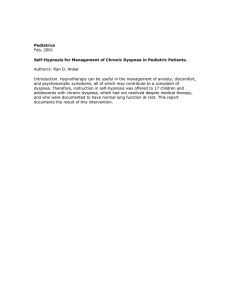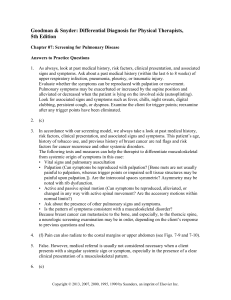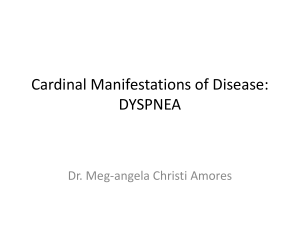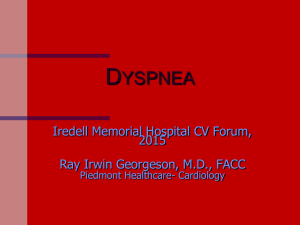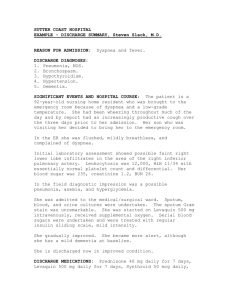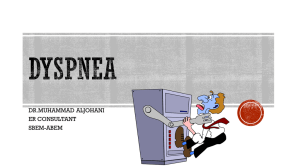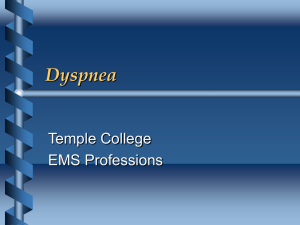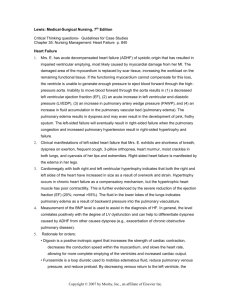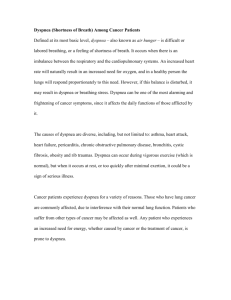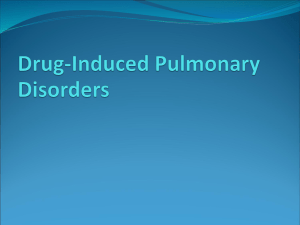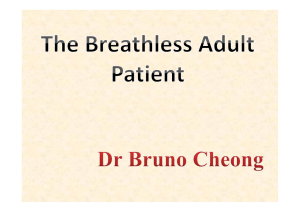Acute dyspnea Vicken Y. Totten MD MS, FACEP FAAFP
advertisement
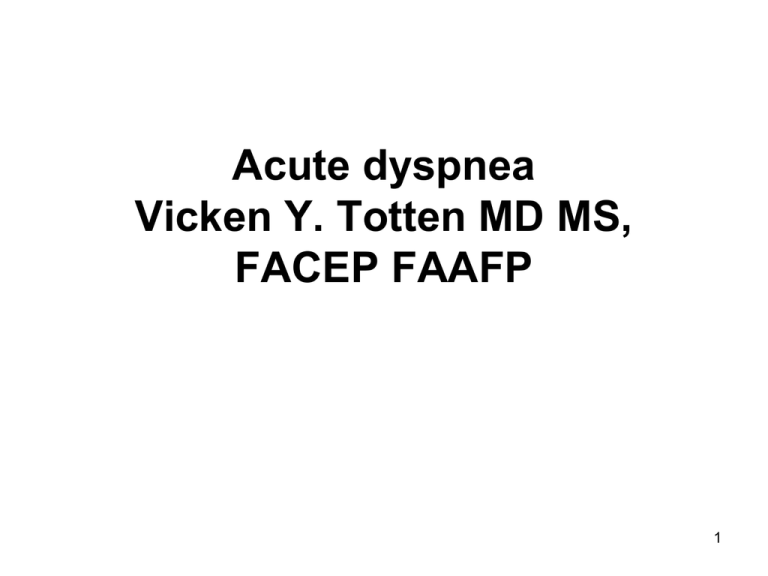
Acute dyspnea Vicken Y. Totten MD MS, FACEP FAAFP 1 Definition • Dyspnea: Subjective sensation of abnormal / insufficient respiration. • Unpleasant, concomitant with excessive respiratory effort 2 Goals of this presentation • Initial evaluation of selected causes of dyspnea: severe asthma pneumothorax pulmonary embolism acute pulmonary edema. • Initial pediatric assessment 3 Tools to evaluate dyspnea • • • • • • • index of suspicion Stethoscope / Physical Exam Possibly CO & CO2 monitors pulse oximeter peak flow meter chest radiograph Ultrasound 4 Subjective vs Objective evidence 5 PNEUMOTHORAX CHIEF COMPLAINT • 28 yo man. 2 d SOB 1 ppd sings in church denies asthma or trauma, malaise, fever or URI symptoms pain is right-sided and respirophasic CLINICAL MANIFESTATIONS Tall, slender, alert and a bit anxious. Palpation does not reproduce the pain. auscultation suggests decreased breath sounds on R no wheezes, rales or ronchi pulse oximetry reading is 93%. Scratch test + (What is this?) Scratch Test Place stethoscope on mediastinum, gently scratch the anterior chest wall alternate sides, equidistant EPIDEMIOLOGY unilateral respirophasic chest pain & dyspnea. incidence 1.7 to 18 per 100,000 more common in males, especially tall, slender young men, half < 40 80% are smokers if over 50, COPD Recurrence 1/3 develop a second episode if 2 episodes, 1/2 suffer a third episode Classification by etiology: spontaneous vs traumatic by severity: ‘small’, ‘medium’ or ‘large.’ Spontaneous: primary (idiopathic) or secondary Secondary minimal barotrauma changes in ambient air pressure commercial air travel. prolonged breath holding: Straining, valsalva straining at stool emesis lifting cocaine or marijuana Infections necrotizing infections streptococcal pneumonia or tuberculosis Due to underlying defects Rupture of weak pulmonary connective tissue Marfan’s syndrome sarcoidosis pulmonary fibrosis occasionally neoplasms RISK FACTORS smoking, asthma, barotrauma positive pressure breathing breath holding, straining 6
